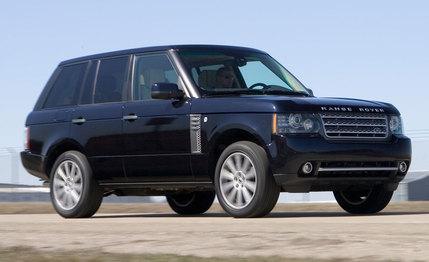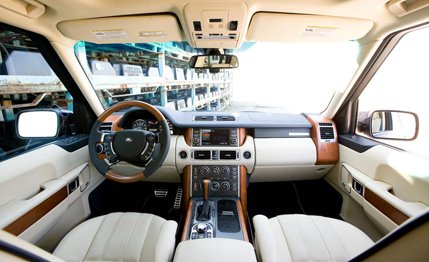 Short Take Road Test
Short Take Road Test


With six adoptive overlords since the Range Rover’s birth in 1970, parent company Land Rover’s corporate marriages have kept pace with even the most licentious in Hollywood. Instability tends to lead to neglect, and the company hasn’t overhauled the Rover in a major way since the BMW-developed third-generation model for 2003.
But for 2010, Tata-owned Land Rover gives its flagship a minor freshening, including an updated interior, along with this generation’s third round of powerplants. The new direct-injection 5.0-liter V-8s are essentially the same as those found across the Jaguar lineup; base Rovers get a 375-hp naturally aspirated unit, and Supercharged models like the one tested here are endowed with 510. With the exception of one no-no—some déclassé pulsing through the steering wheel at idle, which we’ve also noticed in Jags—the new engine is a fabulous upgrade. Linear and 110 horses stronger than the previous boosted V-8—and sans the supercharger whine—it hurls the Rover to 60 mph in 5.1 seconds and can easily rocket the regal box to 90-plus-mph during on-ramp runs, which is something every three-ton luxury ute ought to be capable of, right?

Fuel-economy figures of 12 mpg city and 18 highway aren’t much to brag about, although they do make the 2010 model as efficient as any Rover ever. Which brings up an uncomfortable question: What is Land Rover going to do with its exceedingly heavy and powerful lineup to cope with upcoming fuel-economy hurdles? Is new owner Tata going to sell droves of Nanos as CAFE penance for its Jags and Land Rovers?
Worries fade inside, however, owing to one of the most spectacular interiors this side of a Rolls-Royce. Ubiquitous soft leather is accented by swaths of wood running down the center stack and flanking the edges of the dash. The seats look the part, too, with intricate detailing and dark contrasting piping that set off the gorgeous cream thrones.
A new feature is a 12-inch display screen that replaces gauges with digital facsimiles. This approach strikes us as having a lot of potential—think endless user-adjustable readouts and displays—but the Rover’s execution failed to amaze. There are precious few customizing options, and the large speedometer and tachometer don’t look as dignified as the rest of the Rover’s marvelous interior. Plus, who thought it was a good idea to install a keyless ignition when the driver has to fish out the fob to unlock the doors anyhow? You’re left holding the key fob, with no place to dock it.
The elevated view of the squared-off hood is perfect for off-roading, which is probably only slightly more likely to occur than one of these winding up at a weekend autocross. But that’s not to say that the Rover’s capabilities don’t have day-to-day utility. For example, in the nearly two years that we’ve been in our new office, no vehicle—including the mega–off-road Ford F-150 SVT Raptor—has traversed the four parabolic speed humps that separate us from public roads with such grace. At 30 mph in the Rover, there are zero shudders and just a single, smooth up-and-down motion over each one. Ah, sweet suburban bliss.
But when pushed, the Rover leans dramatically in turns, its limits are low, it understeers early and often, and the undefeatable stability control cuts engine power abruptly and dramatically. In fact, it’s possibly the worst-handling vehicle that still manages to cause an office power struggle when it comes time to decide who gets weekend privileges. All its dynamic misgivings are more than overcome by endless reserves of style, comfort, and, now, power.